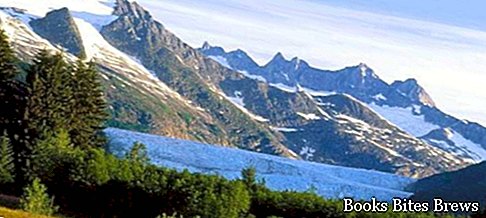General tourist information useful for travel in Alaska, concerning geographic characteristics, climate, natural resources and road network.
Alaska geography
Alaska, one of the member states of the United States, is located in the northern end of North America.
Geographically, Alaska is characterized by being the only US state not bordering on the other states of the American federation.
It can be divided into various geographical areas including the coastal region to the south where there are villages and industrial plants for oil extraction, the peninsula that houses small villages and some mountains with glaciers as well as extensive forests, the innermost part characterized by greater plain and some large rivers such as Yukon and Kuskokwim, the northernmost coast is the least populated part of the state as it is decidedly inhospitable.
It should be noted that Mount McKinley is located in Alaska which with its 6193 represents the highest mountain in all of North America.
The first inhabitants were the populations who moved to America through the Bering Strait which became viable on the surface thanks to the increased extension of the waters covered with ice.
What initially seemed an inhospitable land became a great source of wealth for mineral resources starting in 1898 when gold was discovered which accelerated the colonization of the territory.
Subsequently, in 1968, what is currently the largest oil and natural gas field in North America was discovered.
In 1977 the 1300 km of oil pipeline built to transport crude oil and gas to the port of Valdez was completed.
Climate Alaska
Alaska has a very cold climate which can be divided into various main areas including the south coast where the climatic conditions are less cold but more prone to snowy phenomena due to the considerable accumulation of humidity due to the proximity of the ocean, the interior with temperatures monthly averages below zero for 9 months every year reaching peaks of 62 degrees below zero and the west coast where very cold winters alternate with short cool summer periods.
Alaska natural resources
In addition to the large mineral resources mentioned at the beginning of this article, fishing, of which a large part is destined for export, also plays an important role in the economy of Alaska.
Recommended readings- California (United States): what to see
- Iowa (United States): what to see in the 29th state
- Arches: what to see in the national park
- Arizona (United States): what to see in the state of the Grand Canyon
- North Carolina: what to see between the city and the Atlantic coast
Agriculture and livestock are not widespread, which are just enough to meet the internal demand for milk and vegetables.
Alaska roads
The road network is not very developed due to the low housing concentration and the large distances to be covered, combined with a conformation of the territory that is more adverse to this kind of structural works.
The main roads are in the south and the most important of them is the Alaska Highway which serves as a link between the main cities and Canada.
Juneau capital Alaska
Juneau, which is the capital of the state and can only be reached by sea or by air flights, owes its name to the gold prospector Joe Juneau who discovered a gold mine in the late 1800s and the inhabitants of the mining village which developed around it they wanted to give their name to the city as a sign of gratitude.




